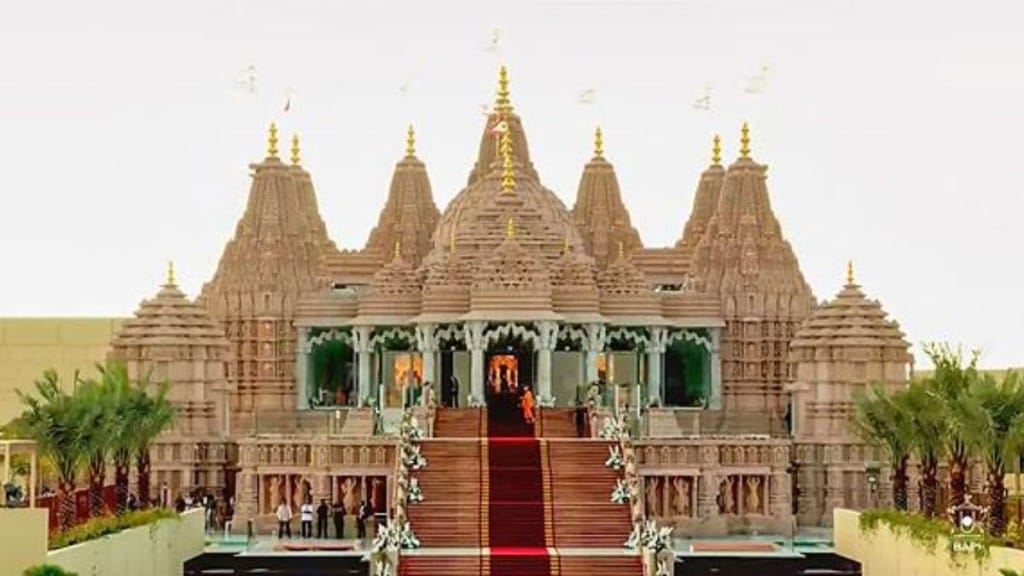Rising majestically amidst the desert sands of Abu Dhabi, the BAPS Hindu Mandir was inaugurated by Prime Minister Narendra Modi on Wednesday. PM Modi received a warm welcome from BAPS’ Ishwarcharandas Swami and was adorned with a garland by a group of priests upon his arrival. The enthusiastic crowd present for the occasion erupted in cheers, chanting “Modi, Modi,” to which the Prime Minister responded with a wave of acknowledgment.
This is the first Hindu temple in the United Arab Emirates (UAE). This event coincides with the PM’s two-day official visit to the UAE, which commenced on Tuesday. Not many know this but adorning the temple’s periphery is the water of River Ganga and Yamuna, which was ceremoniously brought from India. An amphitheatre mirroring the ghats of Varanasi has been meticulously crafted, providing visitors with a space for reflection and meditation.
BAPS Hindu temple: A testament to intercultural harmony
Surrounded by ancillary buildings housing prayer halls, a community center, and more, the temple complex serves as a cultural hub, a PTI report said. Donated by the UAE government, the land has been transformed since 2019 into a monumental testament to Hindu architecture. Ambassadors and spouses from 42 countries were recently treated to a preview of the temple, organized by Ambassador Sunjay Sudhir. The ambassador expressed his excitement at the temple nearing completion, emphasizing that what once seemed impossible has become a reality. Swami Brahmaviharidas, head of the BAPS Hindu Mandir project, provided insights into the temple’s historical significance, construction process, and global impact. The temple is recognized as a powerful agent of interfaith and intercultural harmony, receiving gratitude from both the UAE and Indian leadership.
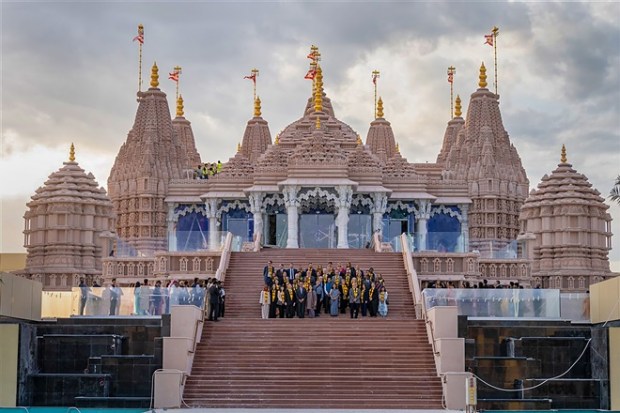
BAPS Hindu Temple: Construction, Architecture, and Cost
– This upcoming Hindu temple marks a significant milestone as the region’s inaugural stone temple and is poised to be the largest in West Asia. Media reports suggest that with a construction budget of Rs 700 crore, it will showcase a meticulously designed façade, featuring seven spires representing each Emirate of the country.
– The construction of the mandir reportedly spans 27 acres of land. Situated in Abu Mureikhah, near Al Rahba along the Dubai–Abu Dhabi Sheikh Zayed Highway, this location was chosen for its strategic placement.
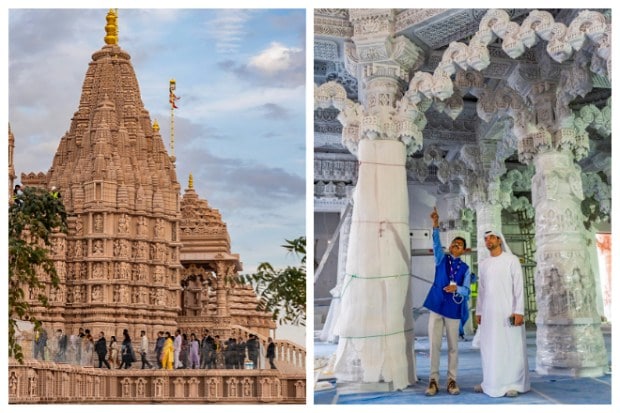
– To bring the vision to life, substantial amounts of pink sandstone were transported from northern Rajasthan to Abu Dhabi. The choice of these stones, known for their durability against scorching temperatures reaching up to 50 °C (122 °F), reflects the practical considerations for the UAE’s climate. Italian marble is employed in the mandir’s construction, ensuring a touch of elegance.
– In an eco-conscious approach, fly ash was integrated into the concrete mix of the foundation to reduce the carbon footprint. Notably, this project stands out as the first Hindu traditional mandir to undergo comprehensive digital modeling and seismic simulation.
– The BAPS Hindu Mandir in Abu Dhabi stands as the largest temple in West Asia, boasting impressive dimensions of 32.92 meters (108 feet) in height, 79.86 meters (262 feet) in length, and 54.86 meters (180 feet) in width.
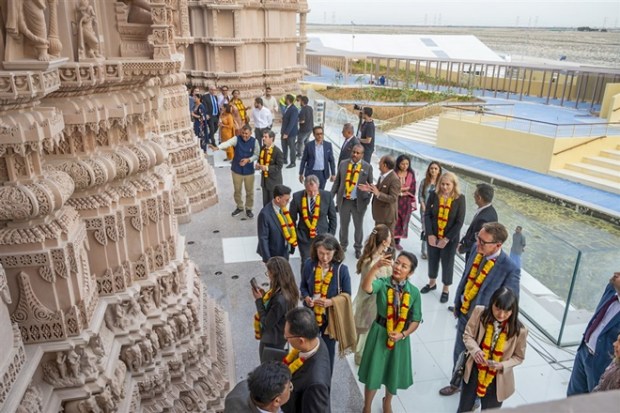
– Noteworthy architectural elements include two ghumats (domes), seven shikars (spires) symbolizing the seven Emirates in the UAE, 12 samrans, and 402 pillars. The temple’s facade features exquisite marble carvings set against a sandstone backdrop, crafted from over 25,000 pieces of stone by skilled artisans in India.
– Within each shikar, intricate carvings depict stories from the Ramayana, Shiva Purana, Bhagavatam, Mahabharata, as well as narratives of Jagannath, Swaminarayan, Venkateshwara, and Ayyappa. The ‘Dome of Harmony’ serves as a unique showcase, portraying the harmony of the five natural elements – earth, water, fire, air, and space.
– The comprehensive facilities of the complex encompass a visitor center, prayer halls, exhibitions, learning areas, a children’s sports area, thematic gardens, water features, a food court, and a books and gift shop. The mandir’s foundation incorporates 100 sensors, while over 350 sensors are strategically placed throughout the structure, continuously gathering data on earthquake activity, temperature fluctuations, and pressure changes.
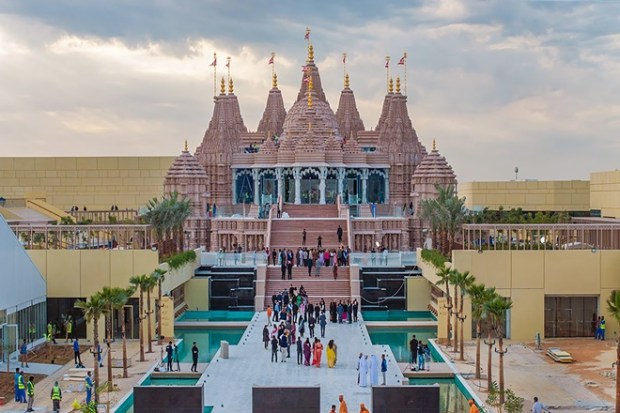
The BAPS Hindu Mandir in Abu Dhabi stands as a testament to the power of collaboration and innovation. It is not just a place of worship but a landmark achievement in sustainable infrastructure, showcasing the potential for religious spaces to become agents of positive change in the world. As the temple welcomes its official inauguration, it paves the way for a future where cultural heritage and cutting-edge technology can coexist in harmony, fostering community, sustainability, and interfaith understanding.
